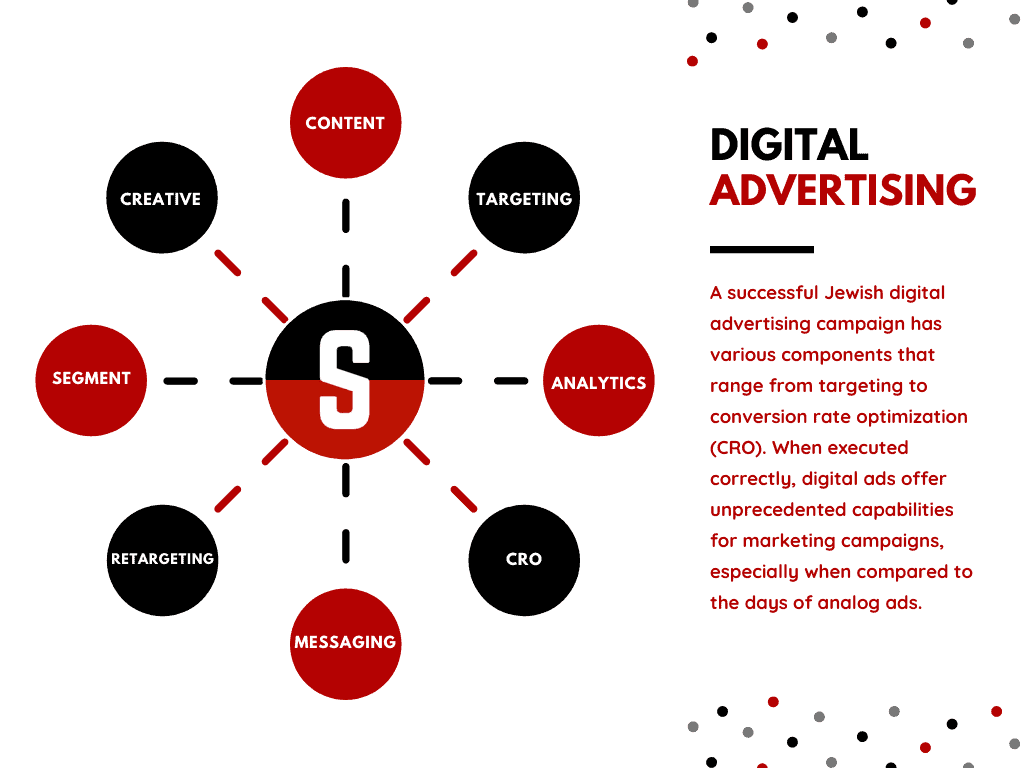History Of Jewish Advertising & Changes Abound
An overview of the history of Jewish advertising & changes abound taking place around the shift from analog to digital advertising platforms.
With the golden era of Madison Avenue advertising starting in the ’60s and ’70s, it is often lost on many that much of the advertising world had a Jewish influence. Mad Men brought back glimpses to Millenials’ of the glory days for what the ad business once was and how Jews founded some of the most well-known agencies. The large conglomerates have bought many of these days of old ad houses. Take the now hip Grey London, founded by Valenstein & Fatt, who named it Grey for fear of antisemitism; WPP now owns it.
Fast forward to the past few decades, and we have seen “a slowly then suddenly” move away from the costly yet prestigious ad houses of Madison Avenue to a combination of boutiques as well agencies under the umbrellas of the big multinationals. With the COVID-19 pandemic, the large advertising companies are seeing added headwinds on top of an already challenging business landscape.
The digital-first focus’s core drivers come down to the unparalleled targeting, messaging, and measurement capabilities it provides compared to analog mediums such as print. The new way of doing advertising has brought with it considerable improvements for both companies and consumers alike. With that said, it is important to stress that, though digital should be the core focus of most campaigns, analog offerings hold value in the right contexts. These scenarios are of particular relevance when marketing to specific segments the Jewish audience, especially the ultra-orthodox, who have more limited digital penetration in terms of devices and internet connectivity.
Whereas with print, creative was what made an ad campaign successful more than anything, in the new world of advertising, data moves the needle. For agencies that singularly focused on creative, especially in the realm of print, they needed to change. Many failed and fell victim to the age-old business failure of not performing a swift enough pivot to the changing reality and were left in the rearview.
Whereas before the digital advertising revolution, print was everything; we have now ventured into what we refer to as the 360° data-driven approach. Data plays the leading role from the creation stages of a campaign, which starts with research and targeting through the measurement and tracking stages. The result is an “always-on” and accurate 360° view of a campaign’s core vitals, including spend and returns, among numerous other KPI’s. In previous decades, analog offerings such as print provided no way to get even remotely close to such visibility. Color on the results of a campaign was delayed by months or even weeks, and by that time, large amounts of money were spent, and change was not possible. On the other hand, Digital requires much less of an upfront investment, and funds can be reallocated based on the streamed real-time data flows.
Aside from the advantages of 360° campaign visibility for digital ads, there are equally, if not more, valuable capabilities that digital offers. Specifically, the ability to target in a laser-focused manner and granularly segment audiences is unparalleled on today’s digital platforms. This kind of ability to hone in on the optimal audience for a campaign is important regardless but especially so when trying to reach such a niche audience such as the Jewish one.
Whether through digital ad platforms offered by Google, Facebook/Instagram, or niche programmatic offerings, the targeting options are practically endless. From age to wealth profile and interests and affinities, the potentialities is a buffet that marketers could have only dreamed of just a decade or two ago.
Digital also provides the unique capability to tailor messaging in real-time to different audience segments. Such messaging can shift based on a myriad of data points and factors and might relate to the audience’s demographics or perhaps where they are in the purchase journey. Campaign results are more likely to see progressively better performance when ad messaging and creative customization is done dynamically based on changing audience data.
Jewish digital advertising’s overall superiority stands in stark contrast to the old way of advertising via analog means such as print. Before the advent of digital, it was one message for all, no real-time understanding of campaign performance, and high cost up-front. Through digital ads, it is personalization in all ways; there is a real-time data-backed stream on performance and low initial cost requirements. The result is more effective and efficient Jewish marketing campaigns.


